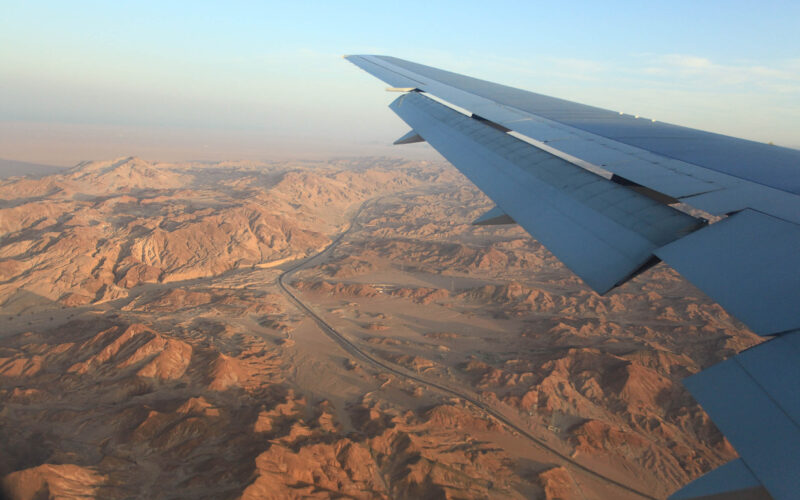Africa has the oldest aircraft fleet in the world. Despite Africans representing more than 17% of the world’s population, their aircraft fleets amount to roughly 6% of global commercial passenger and cargo aircraft in 2020, the African Airlines Association (AFFRA) data indicates. This means that Africa has the lowest level of aircraft per capita of any other region in the world.
For the past two decades, the average age of global aircraft fleets has varied between 10 and 12 years. In comparison, the average fleet age across Africa stands at around 17 years, the oldest of any world region.
For instance, according to Planespotters.com data, South African Airways, South Africa’s flag carrier, operates a fleet of 14 jets with an average age of 15.4 years. Meanwhile, Nigerian carrier Arik Air has a fleet of 18 jets, with an average service age of 14 years.
Similarly aged fleets are also operated by the national airline of Tunisia, Tunisair (14 years in service on average) and Air Algerie (13.9 years on average).
Even the Moroccan national carrier, Royal Air Maroc, one of the largest African airlines by aircraft size, which joined the Oneworld alliance in 2020, flies 59 passenger aircraft that have already spent 13 years in operation.
However, not all major carriers in the region operate such aging fleets. For example, Kenya Airways, a primary competitor airline of Royal Air Maroc, flies 39 aircraft, which have already spent a decade on average in passenger operations. Meanwhile, Egyptair, another large African carrier and the operator of 68 passenger jets, boasts an even younger fleet where the average age of a jet is just over seven years.
Even the leading African airline operates a relatively old fleet. Ethiopian Airlines, Africa’s largest carrier, operates almost twice as many aircraft as Egyptair. The data shows that the Ethiopian government-owned company flies 130 jets that have completed almost eight years of service.
Elderly planes usually have a longer list of former owners. For example, an 18.2-year-old Ethiopian Airlines Boeing 737-700 jet, registered as ET-AVO, was previously owned by Aeromexico and Sun Country Airlines before it was passed to the hands of its current owner.
Another Boeing 737-700 aircraft, the EI-GVW, which is currently owned by Arik Air, has been in operation for 11 years. Initially delivered to KLM Royal Dutch Airlines in 2011, the jet was re-registered and handed over to Mongolian carrier Eznis Airways in August 2011. But a month later it was leased by African airline Arik Air.
South African Airways is another example of an African carrier that successfully uses older planes for commercial passenger services. The company’s Airbus A340-300 jet, the ZS-SXG, is more than 21 years old and was primarily used to serve Spanish carrier Iberia’s flights between 2001 and 2010. In March 2010, the aircraft, which was initially registered as EC-HQF, received a new registration number, F-WJKF, and was transferred to Airbus Financial Services before it joined South African Airways.
What will African aircraft fleets look like in the future?
While the region’s leading airlines operate much older planes, some experts have noted that there is a more promising outlook for the future.
American plane manufacturer Boeing states that the global commercial fleet in 2021 was composed of 25,900 aircraft. In the Boeing Commercial Market Outlook, a long-term forecast of commercial air traffic and aircraft demand, the company forecasts that the global fleet will consist of around 49,405 jets by 2040. The majority, reportedly 43,610 planes, will be newly delivered aircraft that will expand the existing airlines’ fleets or will become replacements for older jets.
Boeing estimates that the aviation market in Africa will see a demand for 1,030 new planes valued at around US $160 billion. Such a demand for the emerging African market will be driven by the anticipated 3% annual economic growth over the upcoming two decades, Boeing analysts say. They add that this should result in the need for more than 63,000 new aviation staff by 2040, including 19,000 pilots, 24,000 cabin crew, and 20,000 technicians.
The continent expects 740 new deliveries of narrow-body jets as well as 250 wide-body aircraft over the next 20 years, meaning that fleets across the African region are expected to grow by around 3.6%.
It is also expected that 80% of African aircraft deliveries will serve fleet growth with more sustainable aircraft such as the Boeing 737, Boeing 777X, and Boeing 787 Dreamliner. Meanwhile, the remaining 20%, will serve as a replacement for older commercial planes.

